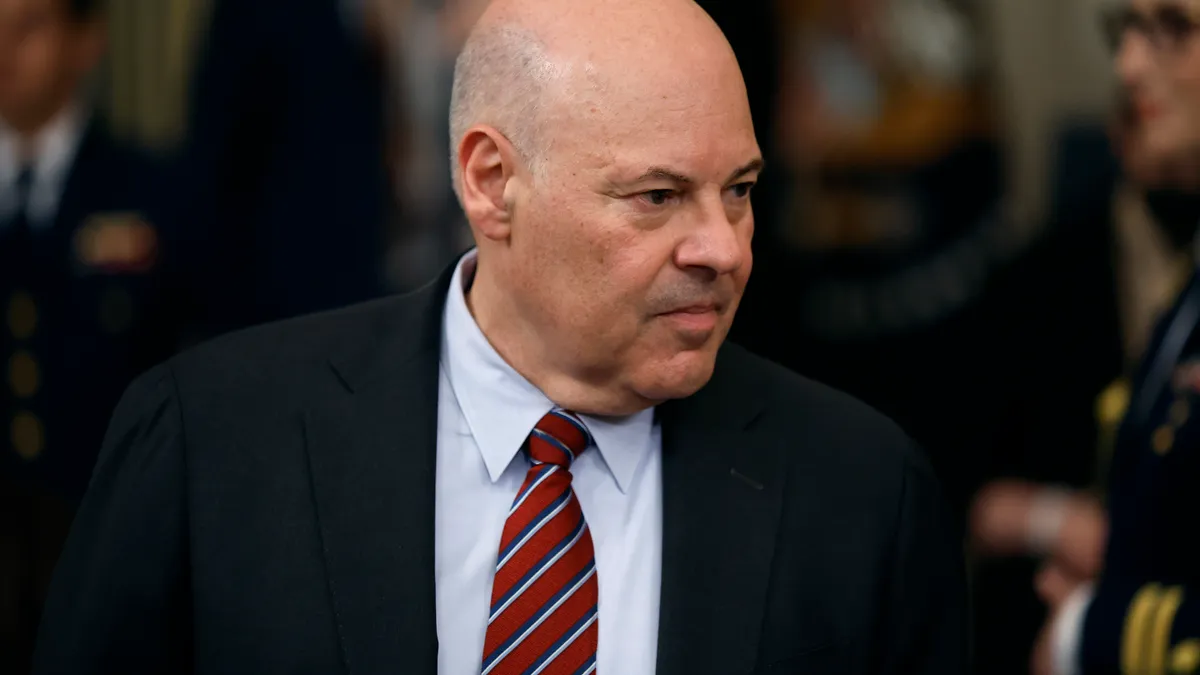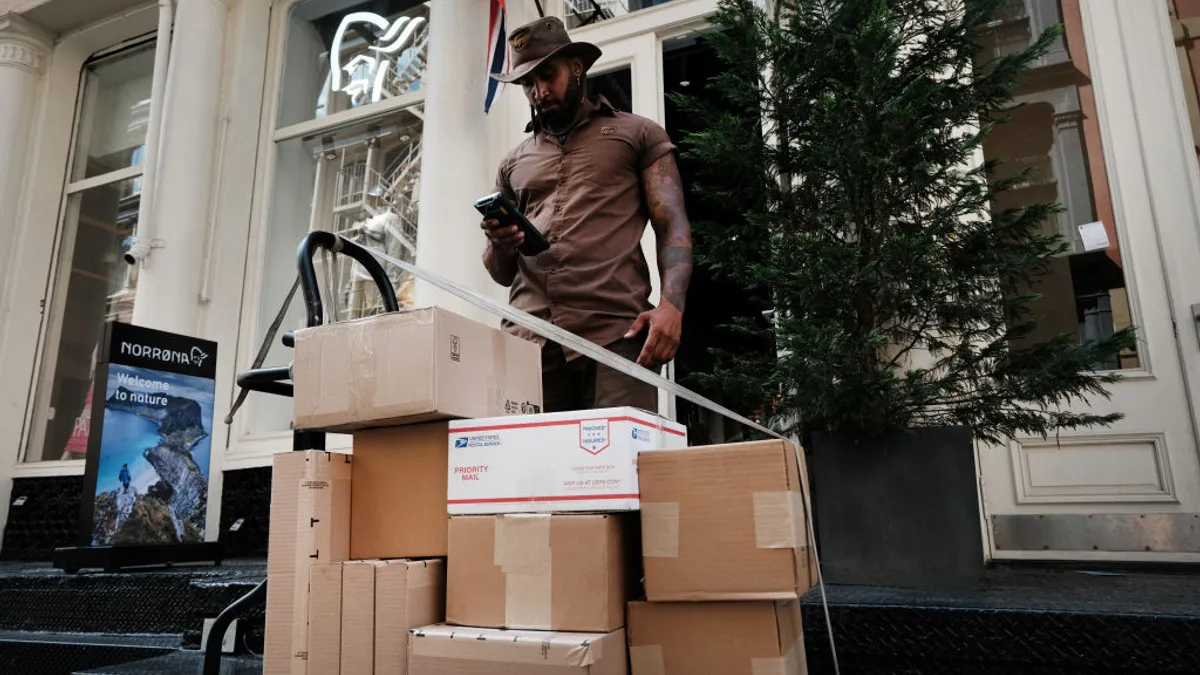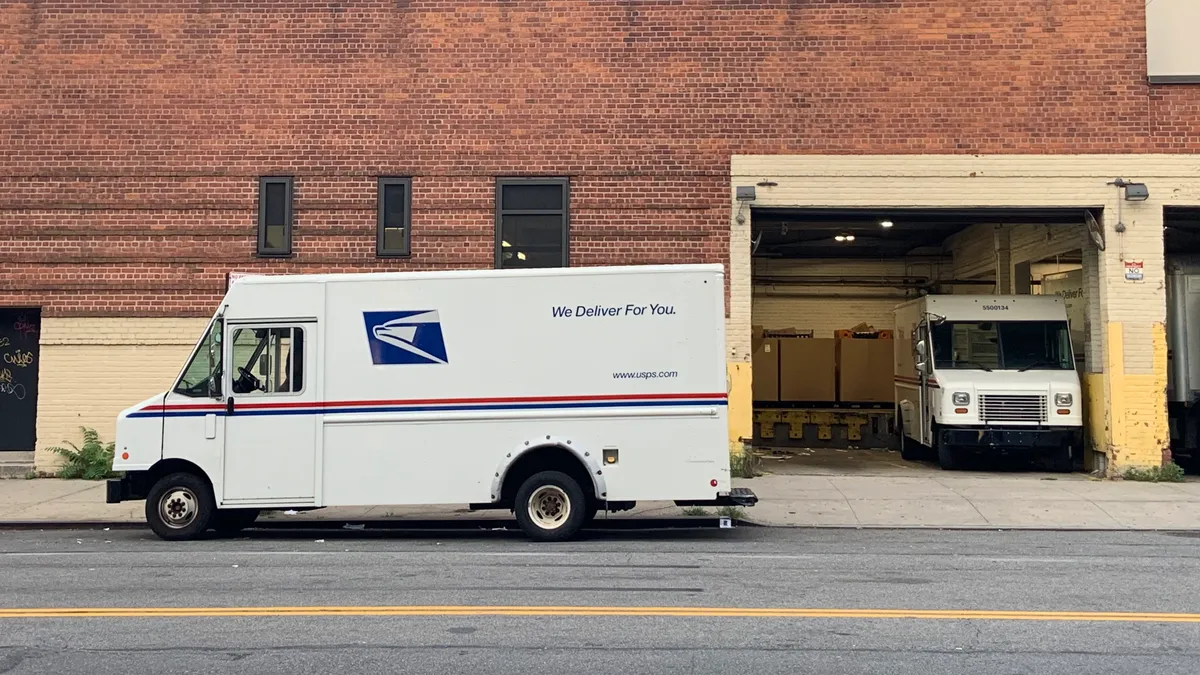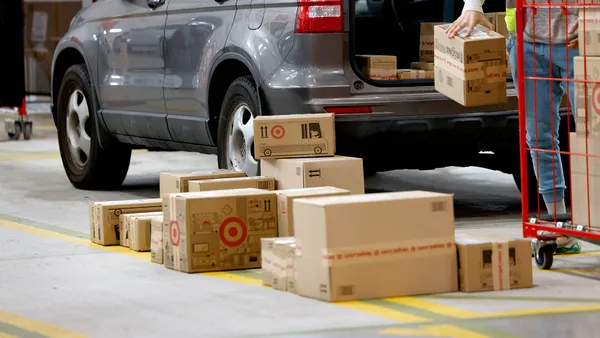Postmaster General Louis DeJoy is working to not only bring the U.S. Postal Service to financial stability, but also transform the agency to be competitive with major private carriers including FedEx and UPS.
DeJoy, in an interview with Supply Chain Dive earlier this month, said he isn't trying to "conquer" the highly competitive package delivery market. But he does want the beleaguered agency to become a leader in the sector, instead of just reacting to market trends.
"The goal is while we're trying to come out of crisis, eventually we will be cost-effective," DeJoy said. "I think we will be the preferred delivery provider in the nation by being very reliable and very affordable. That's the goal."
DeJoy is already neck deep in leading wide-ranging changes at the agency as he works toward that goal. The Postal Service has moved to consolidate its facility footprint and launch a local delivery service to remain competitive with other carriers.
Growing the Postal Service's share of the delivery market would provide a much-needed financial boost to the agency, which saw $87 billion in losses from fiscal years 2007 to 2020. But experts say it's a tall order even for DeJoy, who hasn’t shied from making big changes.
Carriers that have traditionally relied on the Postal Service for some deliveries are now increasingly shipping in-house. To keep pace with FedEx and UPS, the agency will have to more effectively sell shippers on its network while keeping service levels above the rough patch it hit in 2020.
Not your grandmother's Postal Service
As part of its growth plan, USPS is adjusting its operations and business approach to account for the spike in package demand — and decline in mail. An enhanced focus on package delivery puts the agency in direct competition with UPS, FedEx and other parcel carriers.
"I think we're still in the early stages, but clearly they're trying to position themselves as an effective competitor against the private carriers," said Michael Plunkett, president and CEO of the Association for Postal Commerce.
USPS package revenue growth, mail decline began before pandemic
Edmund Carley, national president of the United Postmasters and Managers of America, said the business of the Postal Service has changed dramatically over his 23 years at the agency. The internet has reduced the need for mail communication and the days of the agency making most of its money via "grandma sending you a birthday card" are over.
"We moved that mail first because that was our breadwinner," Carley said. "Now, it's the package business. That's part of [DeJoy's] point. In order for us to be viable into the future, we're going to have to change what we do."
Despite shippers’ growing interest in diversifying their carrier mixes as parcel rates climb, the Postal Service has struggled to compete directly with the two delivery giants, said Nate Skiver, founder of LPF Spend Management. Compared to FedEx and UPS, the list of package shippers with direct contracts with the Postal Service is "relatively short."
"The biggest challenge, I think, will actually be effectively engaging package shippers directly to offer services and contract with those shippers and not rely so much on third parties as they have in the past," Skiver said.
DeJoy understands the need to attract more commercial shippers. He said he's pushing for the Postal Service's sales team to position the agency "as more of a solutions provider," adding that an overhaul to its facilities footprint will allow it to demonstrate the strengths of its regional delivery services.

“We do have the dominant regional delivery system,” DeJoy said. “It's more than the last mile. It's probably the last 200 miles.”
Still, it will take a significant cultural change for the agency to more effectively sell its services "and not just assume that retailers will come to them," Skiver said.
Accelerating pace of change ahead of peak season
A logistics executive-turned-Postmaster General, DeJoy has ushered in substantial change at the agency at a pace not normally seen within government. A 10-year plan to transform the Postal Service includes a shift in service standards and consolidation of thousands of its delivery units into large-scale facilities across the country.
"I don't feel like I move fast enough, and this is not an organization or an environment that is comfortable moving fast," said DeJoy, former CEO of New Breed Logistics, which was acquired by XPO Logistics in 2014.
Since 2021, the agency has deployed 249 new package processing machines, converted 100,000 part-time employees to full-time positions and signed multi-year leases on facilities that bolster its peak season processing space, according to a news release.
While the Postal Service had deployed plans to improve operational efficiency before DeJoy, the pace of implementation has been much faster than it was under previous leadership, Carley said.
"He looks at [the job] from a much more business-oriented frame of mind," Carley said of DeJoy. "His line is, 'If you build the Postal Service today from scratch, it wouldn't look anything like the network we have.'"
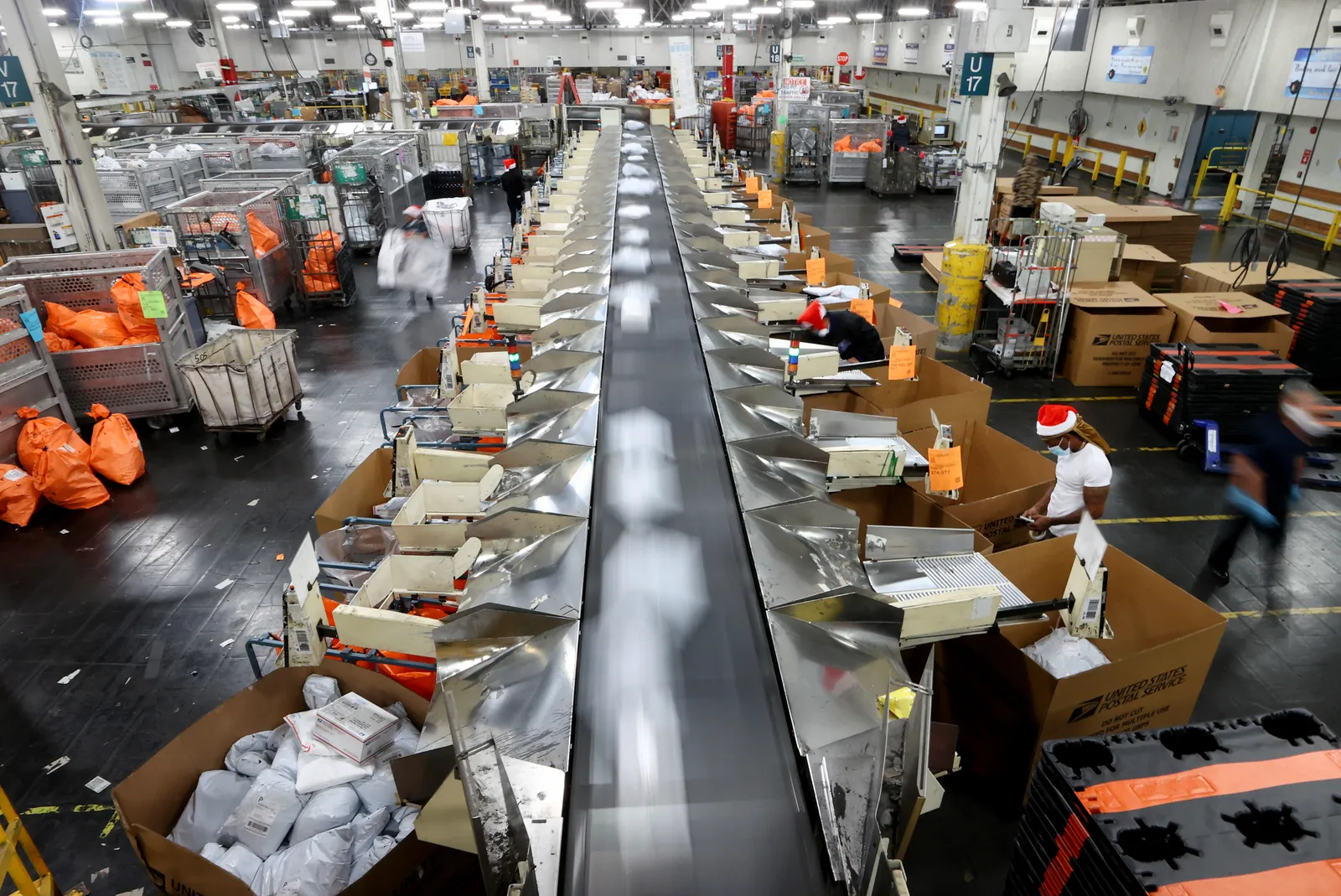
Not all of DeJoy's changes have been entirely welcomed by stakeholders. A move in 2020 to reduce the number of late and extra truck trips from sorting facilities to delivery stations sparked concern it would limit the ability to vote by mail.
DeJoy said the purpose was to reduce schedule deviations and to improve decision-making regarding extra trips. A report from a USPS watchdog found the initiative, among other operational changes, hurt the speed and reliability of mail delivery.
Despite the early issues, the agency hopes the fast-paced changes will help position it to handle a surge in demand during the holiday shipping season after being caught flat-footed in 2020. The Postal Service says it will have the ability to process 60 million packages a day during peak season, up from 53 million in 2021.
Package delivery demand has cooled off in 2022, though the agency said in an August report that volume is expected to remain above pre-pandemic levels. In the quarter ending June 30, the agency reported that revenue and volume in its Shipping and Packages category fell by 1.1% and 5%, respectively, YoY.
FedEx and UPS are encountering the same market dynamics, but they have adjusted to pursue more profitable customer segments and leveraged their pricing power to cushion the blow of reduced volume.
Industry-wide trends could benefit the Postal Service's peak season performance, however, as easing demand gives carriers more processing power to better handle demand surges.
DeJoy said he often feels like he's in an antique shop while leading the Postal Service, with a sign on each part of the agency, reading: "Don't touch. Breakable." But opposition to change and other headwinds haven't stopped him from working to make his vision a reality.
"I don't agree with [DeJoy] on everything. But, for better or worse, he has a plan," Carley said. "He can see a path forward for the Postal Service, and by God, he's going to implement it, and we're going to help him do that."
Editor's note: This story was first published in our Logistics Weekly newsletter. Sign up here.



